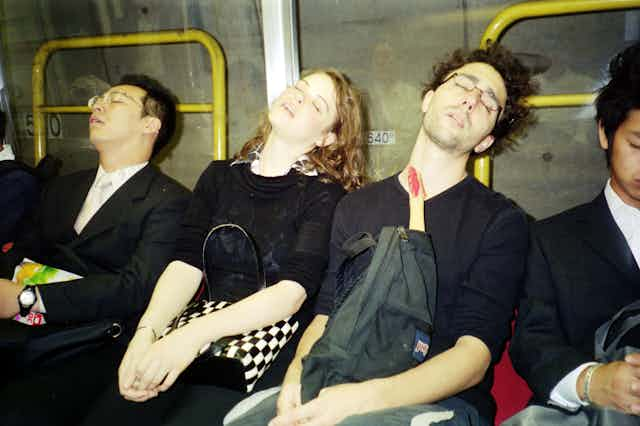Imagine this scenario: after a long day of work, you settle in a train seat, rest your head against the window and close your eyes for a well-earned nap - only instead of the soothing clickety-clack vibrations of the carriage, you hear a deep, jaunty voice - seemingly in your head - urging you to download an app.
Don’t worry - you (probably) aren’t losing your mind. You may have read last week German media company Sky Deutschland has been linked to a new advertising program targeting train commuters. And while a new media source on trains may seem like no big deal in this digital age, there is something about this program that sets it apart.
The audio information of these ads is transmitted via the window of the train. When you rest your head against the glass the signal is heard inside your head, utilising a phenomenon known as bone conduction. See some reactions to the technology in the video below:
How does bone conduction work?
Let’s think about how sound is detected. Humans perceive sound when particles vibrate in a frequency range that our ears are capable of detecting (between 20Hz and 20kHz). Usually, when we talk about human hearing, we are referring to the vibration of air particles that the auditory system processes as sound.
If you’ve ever tried to listen to someone with your head under water you realise just how good air is at transmitting sound to the human ear compared to a substance like water.
The unusual thing about bone conduction is that the vibrating material is not air, but a solid object. Think about what happens when you lean your head against a train window: you can hear a myriad of sounds from the tracks and the carriage that your ears don’t pick up through the air.

This is because your cochlea, or hearing organ, is a bony structure coupled to the bones of your skull. When your head is placed against a vibrating object, like a train window, the vibration is transmitted directly to your cochlea through these skull bones.
Bone conduction assisted hearing isn’t anything particularly new. The technology is already used in bone-anchored hearing aids, swimmers’ headphones, and will be used in the soon-to-be-released Google Glass. But this appears to be its first time used in advertising.
Can I escape it?
You can, but you might have to say goodbye to your window-supported naps.
Earplugs will not be able to block out a bone conducted signal; in fact, they are more likely to enhance it. By sealing the ear canal with a plug, one becomes more vulnerable to the occlusion effect.

To demonstrate the occlusion effect, block your ears completely and speak. Your voice sounds different because you are hearing a combination of the air and bone-conducted signal of your voice vibrating through your skull.
Using earphones would block most people’s ears enough to cause an occlusion effect, and this would make the bone conducted signal even more annoying to those commuters who did not wish to hear it.
Depending on the volume of the transmitted advertisement, it may be possible to block it out (or mask it) with music playing through earphones. However, if commuters are forced to increase the volume of their music players to cover up annoying advertisements, there is potential for that music to cause damage to their hearing.
The only ways which you could actually avoid hearing these advertisements would be to rest your head on a dampening pillow, made of a material that would not transmit the vibration, or take your head off the window altogether.
If advertising campaigns like these were to become commonplace, napping on public transport may be a thing of the past. Enjoy them while you can!

